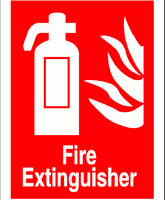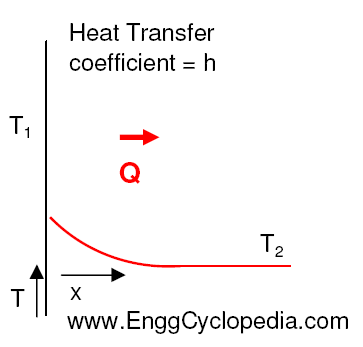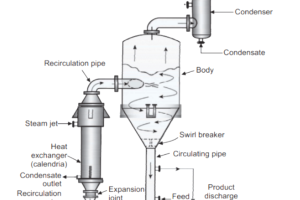Gas turbines are combustion turbines. They are able to burn various types of fuels (e.g. fuel oil, natural gas) at their combustors under the presence of compressed air.
Gas turbines performance during a hot summer day
Gas turbines are constant volume machines. This means that at a specific shaft speed, they always move the same volume of air. However, the power output of a gas turbine depends on the mass flow through the gas turbine. Consequently, on hot summer days, when air is more light, gas turbine power output drops.
Another factor that needs to be considered is the power consumed by the compressor of the gas turbine.The work required to compress air is directly proportional to the air temperature, so increasing the gas turbine inlet air temperature also increases the work of compression and as a result, less work is made available at the turbine output shaft.
As a result, various cooling techniques have been developed so as to help maximize gas turbines power output, especially when operating in hot climates (e.g in the Middle East). Inlet air cooling helps to makeup the loss of power by increasing the air massflow through the turbine and also by cooling the air, which reduces the work of compression.
Limitations of inlet air cooling for gas turbines
There is, however, a limitation regarding how much inlet air cooling can safely be accomplished. If the air intet temperature drops too low, ice can form either at the bell-mouth or at the inlet guide vanes, with the risk of this ice flaking off and causing severe damage to the compressor blades. This phenomenon can occur even when the inlet air temperature is above freezing point, since the turbine suction inlet creates a low pressure ‘cool zone’ at the bellmouth.
A synopsis of the most common technologies for gas turbines inlet air cooling is given below:
Refrigeration-type chillers
Several refrigerant-type air chilling systems have been used. These can range from compressor-type chillers to absorption-type chillers: absorption chillers typically use “waste” heat as energy source for the chilling process.Thermal storage systems have also been used. They typically consist of small chiller plants, which are running when the price of electricity is low (off-peak engines), to make ice or brine solutions which are then kept stored in a properly insulated tank and used to cool the inlet air during peak-power demand. Such systems have proven to be a cost effective means of overcoming power loss during peak-demand periods, while minimising at the same time the high costs typically associated with chiller plants.
Perhaps the most important advantage of these chillers is that they can produce a greater drop in inlet air temperature compared to other competing technologies. They also have drawbacks including among others high initial cost of investment, as well as high operating and maintenance costs.
Evaporative coolers
Evaporation is a natural process which results in the transformation of water from liquid to vapor. When water changes phase, it either absorbs or releases heat. A nice example of evaporation is the cooling effect of a breeze on a summer day. Even if the air is hotter than the body temperature, the breeze feels cooler because it helps evaporate skin perspiration.
Evaporative coolers make use of this principle and are perhaps the most common cooling system employed nowadays. They generally consist of a wetted honeycomb-like material. When air comes in, it evaporates water off the convoluted surfaces of the wetted material, thus reducing the temperature of the incoming air.
Evaporative coolers are generally limited by the amount of moisture present in the air. Once saturation is reached (100% relative humidity), evaporative coolers can't evaporate more water. For this reason, use of evaporation coolers in hot and humid environments is not recommended. On the other hand, refrigerant-type chillers are not restricted by high ambient humidity and are thus capable of giving larger power output than evaporative coolers when operating in similar climates.
High pressure fogging
High pressure fogging is a relatively new technology: Fogging systems are similar to evaporative coolers in that they cool by evaporating water. However, instead of using an evaporative medium, the water is atomized into very tiny fog droplets.
Fog systems typically use high pressure water pumps to pressurize demineralized water. The water then flows through anetwork of stainless steel tubes to fog nozzle manifolds installed into the air stream. These nozzles help atomize the water into micro-small fog droplets that evaporate quickly.
The size of droplets generated by the fog system is a very critical factor. For example, because of the geometry of spheres, a given amount of water atomized into 10-micron droplets produces 10 times more surface area than the same amount of water atomized into 100-micron droplets. Thus, the smaller the size of water droplets, the higher the evaporation rate and the power output gain.
Fogging systems are quite efficient in hot, humid environments and their energy demand and maintenance costs are much smaller compared to chillers
Selection of the right system
When considering which cooling system to implement, it is important to study the existing situation, review climatic conditions, budget limitations, power output expectations as well as project economics. Sometimes, a combination of systems may be the best solution.




